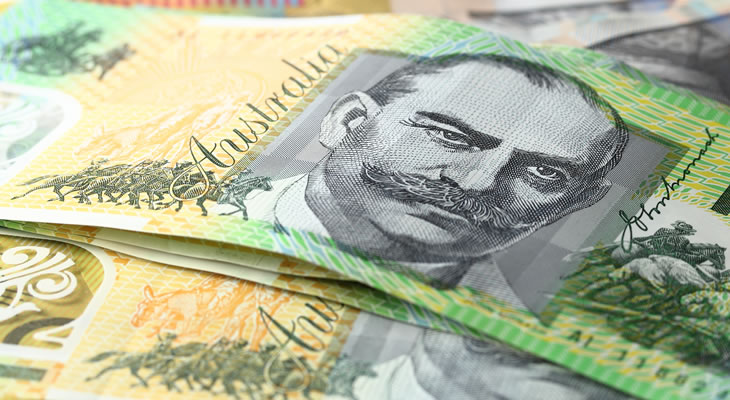The GBP AUD exchange rate surged on Wednesday. The latest Australian inflation data fell short of market expectations and this was enough to cause an Australian Dollar selloff. Meanwhile, Sterling was boosted further by stronger-than-expected UK growth stats.
GBP AUD began the week trending at around 1.6858 and saw mixed trade until Wednesday morning, when disappointing Australian data helped to boost the pair to a fresh four-month-high of 1.7190.
Pound (GBP) Strengthens as GDP Projections Boost BoE Rate Hike Bets
Britain’s economy may have grown at a faster rate than expected in the third quarter of 2017, if the latest growth projections are accurate.
Wednesday morning saw the publication of Britain’s Q3 Gross Domestic Product (GDP) projections, which beat expectations in both key prints.
UK growth was forecast to have remained at 0.3% quarter-on-quarter, but rose to 0.4%. The yearly print, on the other hand, remained at 1.5% rather than dropping to the expected 1.4%.
While many analysts remained concerned that Britain’s growth rate was below average and wondered if the economy was strong enough to support tighter UK monetary policy, others were more hawkish – at least on the chances of a Bank of England (BoE) interest rate hike.
According to Ruth Gregory, economist at Capital Economics;
‘Today’s GDP figures revealed that the economy re-gained a bit of momentum in the third quarter and have probably sealed the deal on an interest rate hike next week.
Looking ahead, with inflation likely to fall in 2018, the worst of the real pay squeeze should soon be behind us. And Sterling’s decline, along with robust global growth, should boost net trade over the coming quarters. As such, we continue to think that growth will be a reasonable (above-consensus) 2% or so in 2018.’
The report followed Tuesday’s comments from BoE Deputy Governor Sir Jon Cunliffe. Cunliffe indicated he was unsure if Britain’s economy was growing fast enough to support higher interest rates from the bank as soon as next week.
Overall though, the growth report bolstered hopes for a rate hike next week and this left Sterling more appealing in markets.
With no particularly influential UK ecostats due in the coming days, GBP investors are now likely to turn their attentions to said Bank of England decision – which will be held next Thursday.
Any decision the bank makes is likely to surprise a notable number of Pound traders due to current uncertainty about whether or not a rate hike could really happen.
If the bank leaves monetary policy frozen next Thursday, the Pound is likely to plunge as hawkish investors sell it in disappointment.
On the other hand, a UK interest rate hike would send the Pound soaring. In this scenario, Sterling would likely easily benefit from weakness in the Australian Dollar.
Australian Dollar (AUD) Plunges as Inflation Data Falls Short
Compared to rampant speculation about the Bank of England (BoE), it seems like it may still be quite some time before the Reserve Bank of Australia (RBA) makes any moves on monetary policy.
Australia’s Q3 Consumer Price Index (CPI) was forecast to have recorded a decent improvement and some hawkish investors were hoping that strong inflation could put pressure on the bank to act.
However, quarter-on-quarter Australian inflation only came in at 0.6%, disappointing forecasts that it would rise from 0.2% to 0.8%.
The yearly inflation rate was forecast to rise from 1.9% to 2%, but instead slowed to just 1.8%.
Overall, the news caused hopes of any hawkish sentiment from the RBA to fade. Some analysts argued that the data indicated the RBA was unlikely to tighten monetary policy at all until 2019 at the earliest.
This is likely to leave some long-term pressure on the Australian Dollar outlook – which may actually be good news for Australian exporters.
The ‘Aussie’ had been notably strong in recent months, which has been a consistent concern to RBA officials as well as exporting businesses.
Unless inflation shows signs of improving, low risk-sentiment and low hopes for RBA hawkishness could keep notable pressure on AUD trade even if upcoming Australian data impresses.
Next week, Australian PMIs from AiG for October will be published, as well as September’s trade balance and retail sales stats.
GBP AUD Interbank Rate
At the time of writing this article, the GBP AUD exchange rate trended in the region of 1.7185. The Australian Dollar to Pound exchange rate traded at around 0.5817.


Comments are closed.